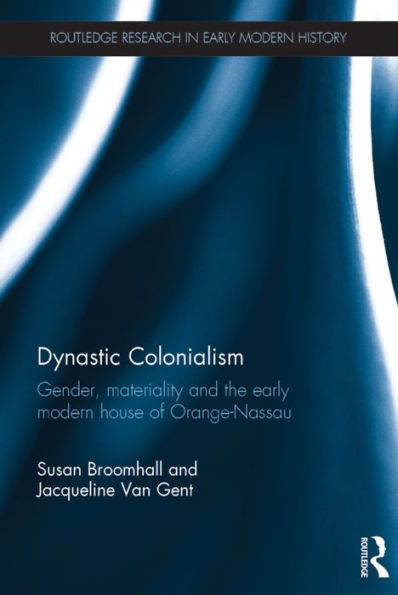Dynastic Colonialism analyses how women and men employed objects in particular places across the world during the early modern period in order to achieve the remarkable expansion of the House of Orange-Nassau. Susan Broomhall and Jacqueline Van Gent explore how the House emerged as a leading force during a period in which the Dutch accrued one of the greatest seaborne empires. Using the concept of dynastic colonialism, they explore strategic behaviours undertaken on behalf of the House of Orange-Nassau, through material culture in a variety of sites of interpretation from palaces and gardens to prints and teapots, in Europe and beyond.
Using over 140 carefully selected images, the authors consider a wide range of visual, material and textual sources including portraits, glassware, tiles, letters, architecture and global spaces in order to rethink dynastic power and identity in gendered terms. Through the House of Orange-Nassau, Broomhall and Van Gent demonstrate how dynasties could assert status and power by enacting a range of colonising strategies.
Dynastic Colonialism offers an exciting new interpretation of the complex story of the House of Orange-Nassau‘s rise to power in the early modern period through material means that will make fascinating reading for students and scholars of early modern European history, material culture, and gender.
This book is highly illustrated throughout. The print edition features the images in black and white, whereas the eBook edition contains the illustrations in colour.
Dynastic Colonialism analyses how women and men employed objects in particular places across the world during the early modern period in order to achieve the remarkable expansion of the House of Orange-Nassau. Susan Broomhall and Jacqueline Van Gent explore how the House emerged as a leading force during a period in which the Dutch accrued one of the greatest seaborne empires. Using the concept of dynastic colonialism, they explore strategic behaviours undertaken on behalf of the House of Orange-Nassau, through material culture in a variety of sites of interpretation from palaces and gardens to prints and teapots, in Europe and beyond.
Using over 140 carefully selected images, the authors consider a wide range of visual, material and textual sources including portraits, glassware, tiles, letters, architecture and global spaces in order to rethink dynastic power and identity in gendered terms. Through the House of Orange-Nassau, Broomhall and Van Gent demonstrate how dynasties could assert status and power by enacting a range of colonising strategies.
Dynastic Colonialism offers an exciting new interpretation of the complex story of the House of Orange-Nassau‘s rise to power in the early modern period through material means that will make fascinating reading for students and scholars of early modern European history, material culture, and gender.
This book is highly illustrated throughout. The print edition features the images in black and white, whereas the eBook edition contains the illustrations in colour.

Dynastic Colonialism: Gender, Materiality and the Early Modern House of Orange-Nassau
364
Dynastic Colonialism: Gender, Materiality and the Early Modern House of Orange-Nassau
364eBook
Related collections and offers

Product Details
| ISBN-13: | 9781317266365 |
|---|---|
| Publisher: | Taylor & Francis |
| Publication date: | 03/10/2016 |
| Series: | Routledge Research in Early Modern History |
| Sold by: | Barnes & Noble |
| Format: | eBook |
| Pages: | 364 |
| File size: | 116 MB |
| Note: | This product may take a few minutes to download. |
